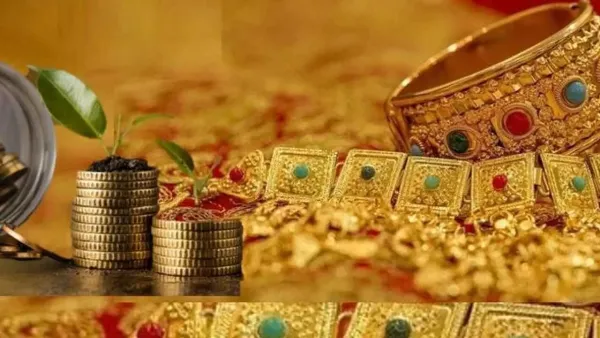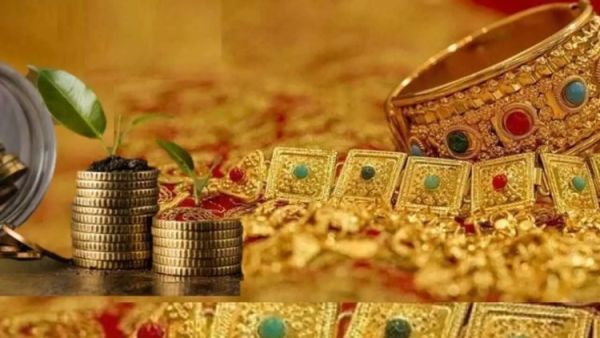
From a peak of ₹100,484 on April 22, 2025, gold prices have dropped more than ₹7,000 per 10 grams during the last 10 days, to ₹93,300 on the Multi Commodity Exchange (MCX) as of Friday.

Nonetheless, Friday’s price represented a significant price recovery after a little gap-up beginning, rising ₹950 from Thursday’s pricing of ₹92,325.
Amid uncertainties about a US-led trade agreement, sentiment stabilised as Comex gold held onto critical support at $3,200 in foreign markets. Because of this ambiguity, market players have been short-covering, which has increased the momentum of the precious metal.
Analysts are nevertheless optimistic about gold for 2025, pointing to ongoing central bank purchases, US inflation worries, and worldwide geopolitical tensions as the major factors influencing long-term demand.
Experts predict that gold prices will increase due to uncertainty surrounding current trade talks, which will provide new upward impetus.
Investors cashed in as the demand for safe-haven assets declined as a result of the global trade tensions subsiding. According to observers, market attitude changed as a result of US President Donald Trump’s suggestions of possible trade deals with South Korea, Japan, and India as well as his upbeat remarks about a deal with China.
A number of significant trade partners have made “very good” proposals to avoid US tariffs, according to US Treasury Secretary Scott Bessent, and India is anticipated to be one of the first to conclude an agreement.
According to a Reuters story, US Federal Reserve members have indicated that short-term interest rates would stay the same until they see more convincing evidence that inflation is approaching the US central bank’s 2% target or until there is a hint of a worsening labour market. High interest rates make non-interest-bearing assets like gold less appealing.
Can the price of gold drop further?
In light of this, most experts think that the gold rally’s peak is already gone and that more declines are in store for the yellow metal.
According to experts, the three-day surge in gold prices from ₹90,000 to ₹99,000 was a euphoric rally, which often occurs when any asset class is experiencing a bubble phase. “During that time, no central banks purchased gold. The demand for jewels in China and India remained weak. It was only the concern that the top two economies in the world would experience a significant slowdown as a result of the 145% tax on China. They pointed out that the parabolic move was caused by recessionary worries that were present across the world.
According to the experts, this kind of shift only occurs once every ten years, and as far as the highs are concerned, we have probably already seen the pinnacle. They think that because the price of gold already takes into account all the favourable variables that may raise its value, the profit-taking will continue.
Should I purchase silver now?
Analysts are becoming more optimistic about the white metal as the gold-silver ratio continues to rise and weakness in the metal is predicted to continue.
They claim that since silver is often impacted by a drop in gold prices, silver usually follows suit, but not necessarily to the same extent. He pointed out that high solar panel tariffs have lowered Chinese shipments to the US, which is why silver prices are now muted.
These exports make up around 18% of the world market for solar panels. The effect of the levy has temporarily lowered the price of silver since the solar industry has been a major source of demand for the metal, particularly with its double-digit rise in recent years.
However, they think this tendency is probably going to be temporary. They note that any positive agreement between the US and China, even if it is merely to sit down and negotiate, might result in an increase in silver prices.